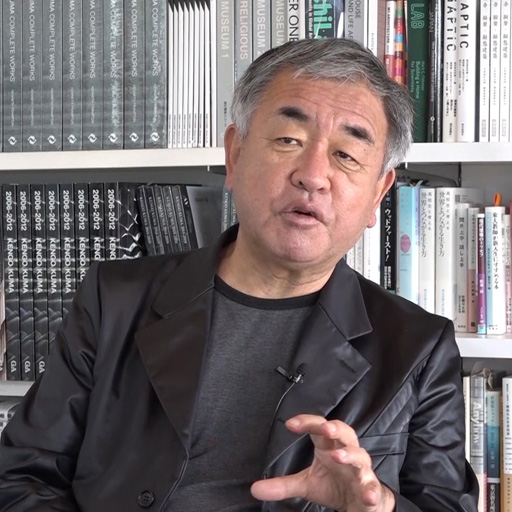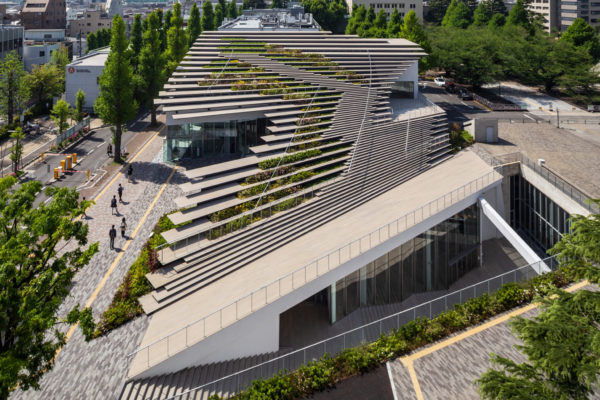#45 December 20, 2021
I had the opportunity to have a dialogue with two very interesting individuals at the end of 2021 – Audrey Tang and Michael Sandel. While Audrey Tang is a technology-oriented person who is the personification of DX, Tang is an openhearted and enjoyable person who says that the three “f’s” of fast, fair and fun are very important, and I completely agree with this. Tang used the word “convivial” many times during our online talk, and while this conversation took place over the internet, the cute Emoji that popped up on screen beside Tang’s face made it a very warm dialogue that did not feel like it took place online. He was being proud about it as a good example that DX could still keep warmth of human touch in communications.
I talked with Michael Sandel on the relationship between his criticism of the expansion of meritocracy and new liberalism, and urban policy. He started by stating that Winston Churchill once said “We shape our buildings, thereafter they shape us.”
In response to this, I pointed out that at the beginning of the 20th century, the elite class who were the victors of competition worked in the skyscrapers that were being built which were the top place in large cities, and this provided a visualization of the vertical hierarchy of the meritocracy in society, which has widened and perpetuated the gap between the rich and the poor. And Sandel’s reply was interesting - it is certainly true that skyscrapers were an invention in New York City in the early part of the 20th century, but Central Park was created before this. Central Park is a place for communication and relaxation that is open to all classes of people, and it complements the meritocracy in the skyscrapers. If this is the case, Tokyo is a city of meritocracy that does not have a device like Central Park that complements skyscrapers, and therefore has few redeeming qualities since the only thing that was brought to the city was many skyscrapers.
Just how can convivial places be restored that are open to all classes of people in this world? These conversations with two people provided various hints for how we should live in the year 2022.


ProjectsTokyo Institute of Technology Hisao & Hiroko Taki Plaza
 Located at the entrance of the Tokyo Institute of Technology Ookayama Campus, we designed a “platform” to house student activity. To maintain a clear vista of the clocktower, a prominent landmark for the campus, most of the building sits underground. Above ground, the building takes on a lush mound-like form, seamlessly integrating with the surrounding landscape. The “roof” which is composed of stepped greenery and bleachers, resonates with the green slanted wall of the adjacent library, collectively creating a green valley. The green valley serves as a new green space to invite life and activity for the students. The line between the interior space and exterior landscape is blurred by continuing the stepped landscape into the building. This allows activities such as co-learning and joint workshops to be held simultaneously on different levels. The space flows ambiguously without clear spatial divisions, stimulating the senses of the users both visually and physically. In order to consider many complex site conditions, we first determined the overall sectional profile of the roof, followed by the strip-like steps of the bleachers fanning out. This resulted in a roof silhouette that resembles the landscape of a river delta that spills into the campus. By exposing the twisted structure that supports the roof, the interior space yields a certain fluidity. Two architectural landscapes were created, the exterior and interior landscapes, relating to each other in a resonating harmony. Read More
Located at the entrance of the Tokyo Institute of Technology Ookayama Campus, we designed a “platform” to house student activity. To maintain a clear vista of the clocktower, a prominent landmark for the campus, most of the building sits underground. Above ground, the building takes on a lush mound-like form, seamlessly integrating with the surrounding landscape. The “roof” which is composed of stepped greenery and bleachers, resonates with the green slanted wall of the adjacent library, collectively creating a green valley. The green valley serves as a new green space to invite life and activity for the students. The line between the interior space and exterior landscape is blurred by continuing the stepped landscape into the building. This allows activities such as co-learning and joint workshops to be held simultaneously on different levels. The space flows ambiguously without clear spatial divisions, stimulating the senses of the users both visually and physically. In order to consider many complex site conditions, we first determined the overall sectional profile of the roof, followed by the strip-like steps of the bleachers fanning out. This resulted in a roof silhouette that resembles the landscape of a river delta that spills into the campus. By exposing the twisted structure that supports the roof, the interior space yields a certain fluidity. Two architectural landscapes were created, the exterior and interior landscapes, relating to each other in a resonating harmony. Read More